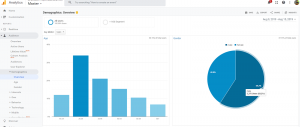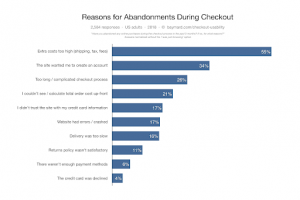3 Proven eCommerce Conversion Tips to Drive Sales
August 22, 2019
Your online store could be live, your inventory could be fully stocked, and your marketing campaigns could be on overdrive. Despite this, you might still discover that sales are low. Curious visitors might already be pouring into your store, but too little of that traffic is resulting in an actual purchase. Perhaps you came into this believing that merely setting up a digital storefront and setting up pay-per-click advertisements would get you rich quickly. Now, your broadband is being strained for little reward.
This problem is not uncommon among those who run online businesses. Thankfully, boosting your conversion rates is not that difficult, either. There are many improvements you can make and techniques you can implement. You just need to invest some time and money, work hard, and — more than anything right now — know what you need to do.
Here are some eCommerce conversion tips that drive sales.
1. Target the Right Demographics

Many eCommerce store owners, especially those who are still quite new to the profession, are not picky about who they attract. They spread the word about their business however they can wherever they can. The matter of demographics enters the conversation beforehand, but it exits as soon as they pick a broad range. These entrepreneurs conduct all these campaigns under the belief that more visitors inevitably translates to more money.
However, grabbing people’s attention matters little if they are not the type who would really be interested. Choosing a general age range or gender is not enough. You need to break down those demographics, analyze each group’s lifestyle and behavior, and craft distinct strategies for all of them.
It may also help to see some statistics on the people who have already bought something from you. Try to determine different aspects of their identity from the information they gave during the checkout process and the items they purchased. This would show which groups you can win over and help you redirect your advertising.
If possible, see also how the majority of your visitors are finding your website. How many clicked on paid advertisements, or links in your emails? How many found your site organically, meaning from search results? How many actually typed in the URL, implying a personal recommendation from someone they know? Any answers you find will reveal the effectiveness of various campaigns.
At first, you might see the number of visitors go down. Over time, though, you might also see the number of orders go up, as more people from your target audience check out your store.
Satisfied customers will then tell other people about you, and the resulting word of mouth may bring you more visitors than ever before. Appealing to the right demographics for your brand and industry can thus create a cycle of growth and success.
2. Make Everything Easy to Understand
When you want someone to do something, you should be as clear as possible on what you want them to do. Conversions are all about getting people to do something, whether it is subscribing to email blasts, creating an account, or placing an order. The simplest way to encourage conversions is to keep things simple. This encompasses many aspects of your eCommerce store.
In your quest for clarity, you can also get people to do what you want using the layouts of your individual pages and your website as a whole. For the former, make sure that the most visible aspects of the page are the ones you want them to see and interact with. Clever organization and thoughtful use of color can help highlight the important elements, particularly the ones people can click, and mute the rest.
As for your ecommerce website, navigation should be intuitive enough that first-time guests can find the information or products they want with ease. You could achieve this by limiting the number of product categories and subcategories, or by adding a robust search tool. The most important pages should be linked in the navigation bar, either on the top or sides of the page. Ideally, they should always be visible.
This also extends to your emailed newsletters. Each one you send may have different purposes, such as advertising new products or offering discounts through promo codes. With that said, all of these messages actually have the same goal: get as many readers as possible to click their links. When writing the content of your emails, every word and graphic should collaborate to guide your subscribers towards that call to action.
Last but not least is the checkout process. Confusing checkout pages can turn off potential customers precisely when they are on the verge of making a purchase. Popular symbols, like the shopping cart icon and the red asterisk next to an incomplete information field, are easily understood. Calls to action should be laconic yet unambiguous, so they can point people the right way. You may risk stating the obvious and resorting to some eCommerce clichés, but some people will thank you for it.
3. Work on Your Cart Abandonment Rate
Speaking of checkout, the cart abandonment rate shows how many shopping carts were created on your website but never submitted as orders. By definition, each abandoned shopping cart also represents a failed attempt at conversion. Thankfully, you can cut down cart abandonment and boost conversions at once with the right technology and techniques. After all, the browsing is already done. The desired items are in the cart. It is just the actual checkout, the very last part of the process, which needs to be finished.

Source: blog.3dcart.com
Sometimes, people do not intentionally abandon their carts. They may resolve to finish the order later, get distracted, and forget. Or, they may accidentally close the window before they get the chance to make a purchase. A variety of tools, like CartStack, can help potential buyers recover their shopping carts. You could find and employ software that actually sends emails to people with reminders of their incomplete orders. The carts themselves could be saved with special features, or simply with cookies and caching.
Streamlining the checkout process is essential to moving the abandonment and conversion rates in the directions you want. If that process is overlong, some customers will feel overwhelmed. You should consider how much information you actually need from them and cut down on the number of fields. If you try that and it still feels like a lot, you could try condensing everything into one page, if possible. Another solution is a progress bar. When they can see the finish line, checkout will not feel as long.
You may also want to offer visitors the option of creating an account for your website — which is, itself, a conversion. By saving their information like this, they just need to give their information one time. Placing an order can be almost instantaneous. Buttons for account creation should be included on the homepage, during checkout, and on other important sections of the site. People with accounts can create a cart, close the page, and still have the cart ready when they open it again. That is two conversions in one.
Of course, you should not be too forceful when reaching for conversions. While you should encourage people to sign up for accounts, some will still prefer checking out as a guest for their own reasons. Customers appreciate having multiple options. Making account creation a requirement for placing an order will turn them off completely, never to return. The same goes for any of the other neat features we described in this and other sections.
These are just a few solid tips for driving up sales and increasing your conversions. There are many other methods you can try in addition to all of these methods and practices. With that said, none of it will work without the right attitude. Achieving a major increase in conversions and sales does not happen by leaving your store on autopilot. It requires a great deal of research, brainstorming, experimenting, and retrying — in short, a great deal of work.
That work can make the difference between disappointing conversions and significant success. Moreover, that attitude makes the difference between having an online store and running one.
![]() Author Bio: Gonzalo Gil – 3dcart
Author Bio: Gonzalo Gil – 3dcart
Gonzalo is the founder and CEO of 3dcart, a leading ecommerce platform for online businesses. As an ecommerce expert, Gonzalo works with businesses of all sizes to help them build their online presence and succeed selling online.





